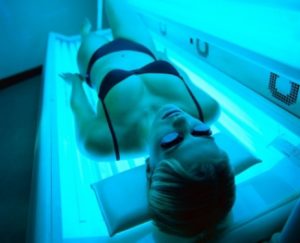 Many people believe that using a tanning bed, booth, or sunlamp to get a tan is safer than tanning outside in the sun.
Many people believe that using a tanning bed, booth, or sunlamp to get a tan is safer than tanning outside in the sun.
But the truth is that just like sun tanning, indoor tanning also exposes skin to ultraviolet (UV) rays, the cause of most skin cancer.
UV rays, whether they come from indoor tanning or the sun, can also cause wrinkles, rashes, and dark spots. And tanning is particularly dangerous for the young. According to the Centers for Disease Control and Prevention (CDC), people who begin tanning during adolescence or early adulthood have a higher risk of melanoma, the deadliest type of skin cancer.
According to CDC research, indoor tanning is especially popular among young women and teenage girls. One big reason is they believe they look more attractive and healthy with a tan. Many teens and their parents think getting a tan indoors is safer than tanning in the sun. But UV rays damage skin no matter where they come from. The most dangerous types of UV rays can actually change the DNA in cells, which is what experts believe causes most skin cancers. Weaker UV rays, though less likely to cause cancer, are linked to long-term skin damage, including wrinkles and changes in texture.
Indoor tanning is so dangerous, especially for young people, that federal, state, and local governments are taking steps to protect anyone under 18. California, Delaware, District of Columbia, Hawaii, Illinois, Louisiana, Minnesota, Nevada, Oregon, Texas, Vermont, and Washington have banned the use of tanning beds by minors, as have local jurisdictions in other states. As part of its Healthy People objective to improve the health of all Americans, the US Department of Health and Human Services has set a goal to reduce the proportion of high school students who use artificial sources of UV light for tanning to 14% by the year 2020.
